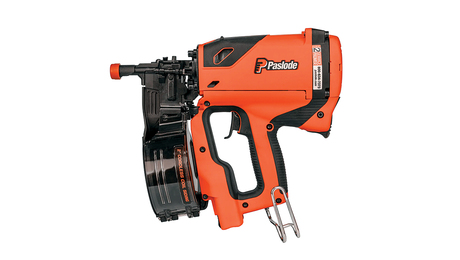I have a brick house build in 1857. The exterior walls are brick with plaster on the inside. I’m considering building a stud wall inside of the exterior wall and insulating with mineral wool, and putting ISO on the studs before I drywall. I’m planning on replacing windows at the same time. Most of the insulating articles I’ve read deal with wood wall construction and moisture build up after the wall is insulated. Would moisture be a concern between the new wall and old wall?
Discussion Forum
Discussion Forum
Up Next
Video Shorts
Featured Story

The Paslode cordless siding and fencing nailer drives fasteners reliably without the hassle of hoses or compressors.
Featured Video
SawStop's Portable Tablesaw is Bigger and Better Than BeforeHighlights
"I have learned so much thanks to the searchable articles on the FHB website. I can confidently say that I expect to be a life-long subscriber." - M.K.














Replies
It depends if the old wall is weather sealed or not. The windows are only one point where elements can penetrate the structure. older houses can drain moisture more easily than new ones, so use care in how you wrap it. youtube Matt Risinger to see some horrible modern moisture sealing mistakes.
The Problems with Insulating Brick.
The main problems associated with adding insulation to the interior of a brick wall involve moisture damage. If you live in a mild climate, you will probably not experience these issues. But homeowners in cold and wet climates have several considerations.
Although the interior of the wall has been updated with insulation, the exterior has not been changed in any way. That brick will still have the same exposure to water and cold that it had before.
However, since the air flow has been reduced, the outside wall will experience wetter conditions for longer and potentially freeze. This of course can damage the bricks from expansion. This is called the freeze/thaw cycle.
Bricks are not very waterproof—water will pass right through them, hence the need for weep holes. Without modern vapor barriers and insulation, this is usually not a problem as the brick can dry out.
When insulation and air sealing are added to a brick wall, however, air and moisture can no longer move freely. This moisture accumulation can lead to many problems:
Freeze/thaw damage
Mold and rot damage on embedded elements, such as wood beams
Condensation from thermal bridging if there are any air leaks
Mold growth on insulation that gets wet
Lack of visibility of water damage in wall
Thanks for the help, I’ve been doing more digging on my own and have come up with the same. So I’m looking at insulating the attic better, and insulating the basement. I work for a commercial/industrial GC, I’m surprised at how much I don’t know about and how different home construction is. The more I’m in the house the more I’m amazed at how well the old house retains heat and how poorly the additions (1980s) to the house do not. They look good, they just don’t perform well. Thanks again for the reply